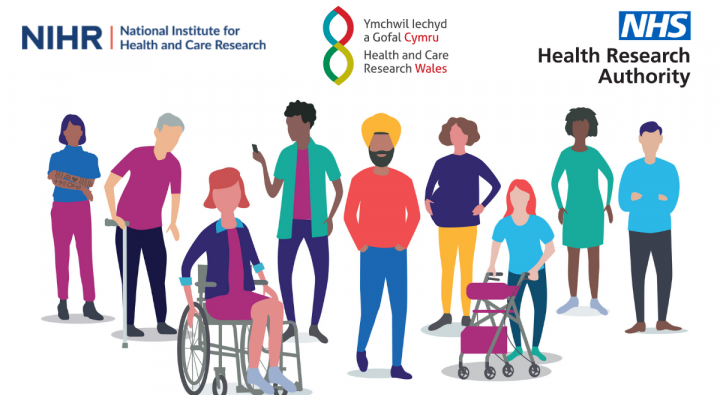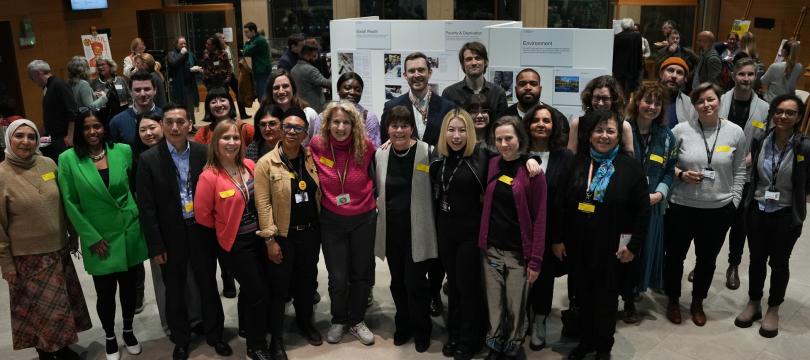New guidance will help to determine fairer payment approaches for public involvement in research
Explore new, co-produced guidance to support fairer payment for public contributors involved in research - the motivations and approaches behind the guidance, how it can support your organisation, and hopes for the future.
Explore new, co-produced guidance to support fairer payment for public contributors involved in research, and how it can support your organisation.

What’s the problem?
Have you ever been frustrated by the challenges of payment to public contributors for involvement in research? Are you unsure whether public involvement in research constitutes employment, and what tax implications there might be for these payments? You’re not alone.
I’m Silvia Bortoli, a Senior Public Involvement Manager at the National Institute for Health and Care Research (NIHR). A significant proportion of my work focuses on trying to address issues around payment for public involvement, and I wanted to share recent work we’ve done to start tackling some of these issues.
What’s the solution?
In June 2022, the NIHR, Health and Care Research Wales and the Health Research Authority published new guidance on payment for public involvement in health and care research to support organisations to ascertain the most appropriate and efficient payment approach. The guidance specifically aims to address challenges around employment status and tax.
Our guide aims to support organisations to easily pay public contributors by:
- describing principles of payment for public contributors and key challenges currently faced in the sector such as inflexible payment systems, inconsistencies within departments and contradictory information
- providing direction to those managing and administering payment, and supporting them to understand employment status and tax regulations
- signposting to information and HMRC guidance, to inform decisions on payments based on public involvement activities such as attending events and seminars, giving talks, and reviewing documentation
One element of the guidance which we hope will be helpful is the “Public involvement activity categorisation”. This section outlines illustrative examples of public involvement activities and their likely employment status and tax implications. I also hope that the “Decision flowchart” in Annex 3 provides a useful visual guide to determine employment status and tax implications.
This work is particularly important because appropriate and efficient payment of public contributors can help ensure people from diverse backgrounds, and with a variety of perspectives and experiences, are included in research. This leads to research that is more meaningful and relevant for the diverse communities it is trying to support.
How did we develop this guidance?
Public involvement staff from across our 5 nations partners recognised that issues around payment were not unique to a specific country or region. We came together to try to tackle some of the most deep-rooted issues in the sector, and we quickly identified that confusion and issues around employment status and tax were a major challenge.
The ‘core group’ who led this work comprised of myself, Jim Elliott from the Health Research Authority, Reshma Raycoba and Alex Newberry from Health and Care Research Wales, and public contributor Bob McAlister. Reshma and Bob co-chaired our group. Having Bob in the role of co-chair was invaluable; his perspective kept us grounded and constantly reminded us of the public contributor experience and the difficulties they sometimes face when it comes to payment.
We also established a working group to provide regular, remote feedback as the guidance developed. This group comprised of public contributors, involvement staff, researchers, finance and HR staff and charity staff.
Importantly, we also engaged with Her Majesty’s Revenue and Customs (HMRC) to check the most appropriate guidance and correct interpretation. This was not an easy task as finding the right people in this government department took time, but in the end their insights were invaluable.
What impact would we like to see as a result this work?
Our hope is that, by referring to this guidance document, involvement staff, researchers and Finance teams are able to navigate challenging conversations and agree the most appropriate and efficient ways to pay public contributors for their vital contributions to research.
We hope that Finance teams will be able to better understand the unique role of public contributors, and flex their payment approaches so that people from all types of backgrounds can be offered payment for their time and expertise. Our ambition is that public contributors can get involved in research without worrying about payment and the associated challenges, for example barriers to being put on payroll when they are not employees.
Let us know what you think
While this guidance has been co-produced with key stakeholders, we recognise that further development may be required. We are releasing this document as a ‘consultation in use’; inviting organisations to use this guidance and provide feedback on what impact it has, and on any further information or changes that may be needed.
If you’re struggling with payment challenges in your organisation, I’d encourage you to share this guidance with your Finance teams. We’d love to hear how this is being used in practice, and whether it’s supporting you to determine the fairest payment approaches possible.
To provide feedback, you can email us at ced@nihr.ac.uk.
Read the Payment for Public Involvement guidance
By Silvia Bortoli, Senior Public Involvement Manager at the National Institute of Health and Care Research (NIHR).
